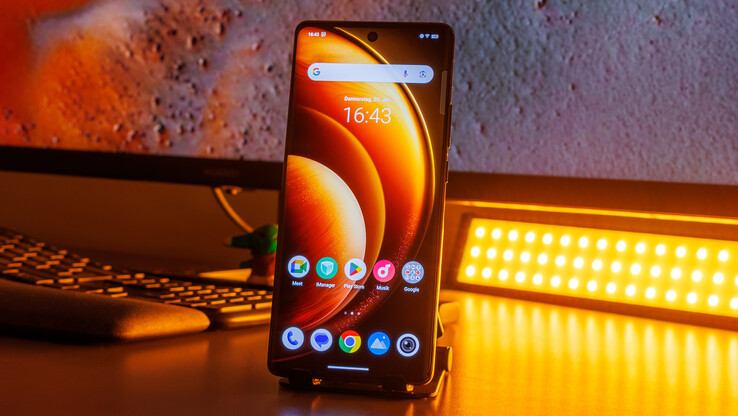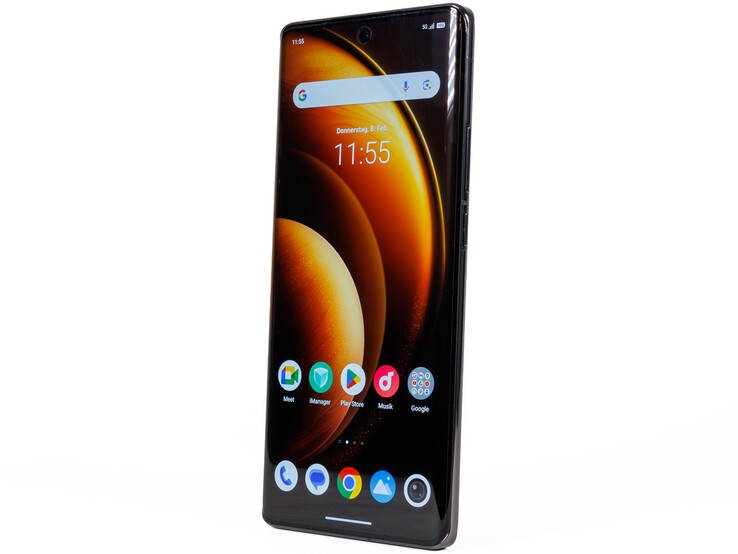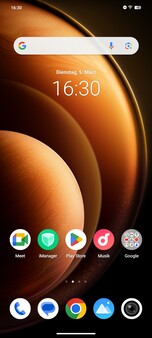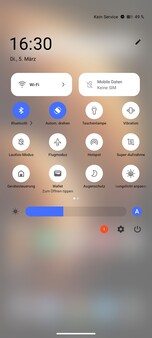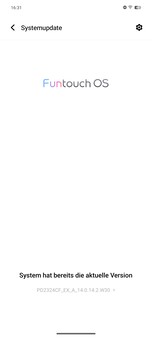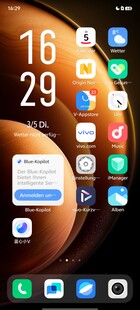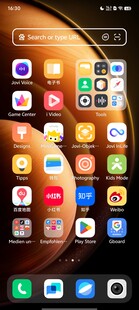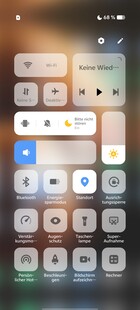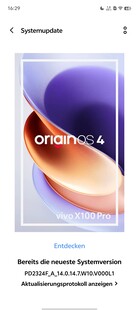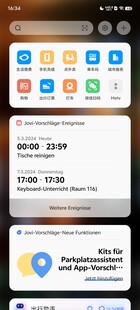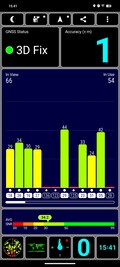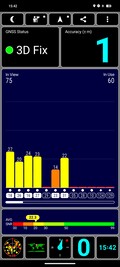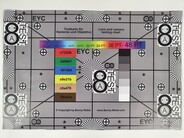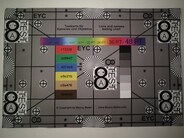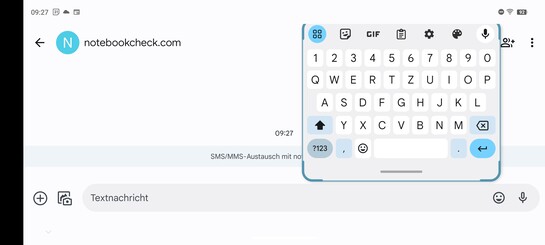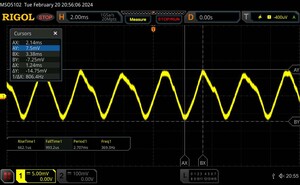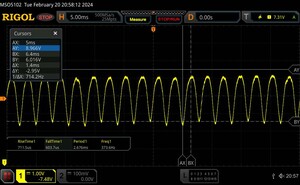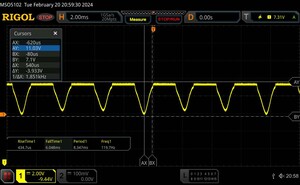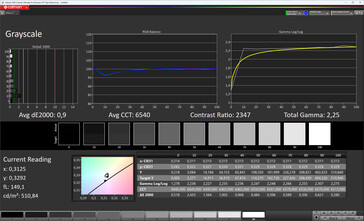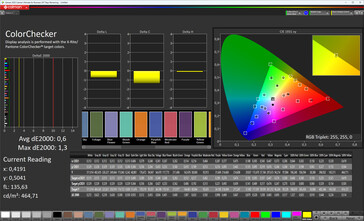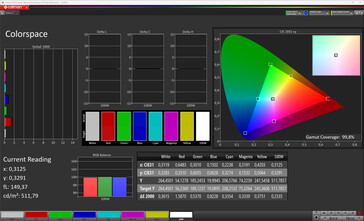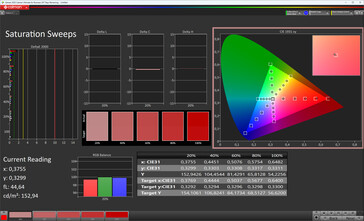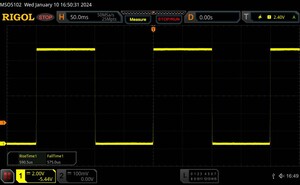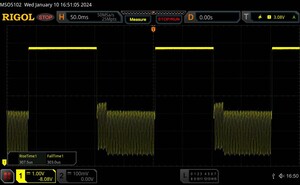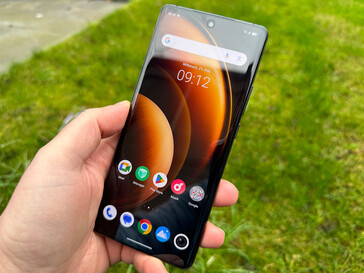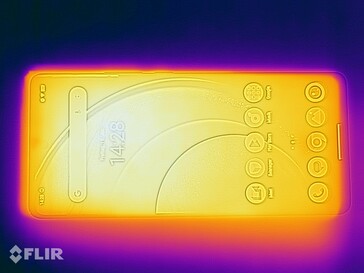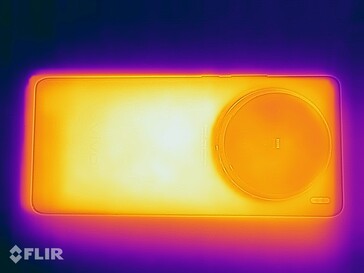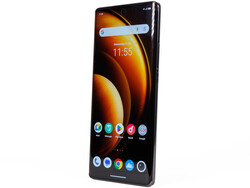Vivo X100 Pro review - Impressive premium smartphone with Zeiss camera
The Vivo X100 Pro is the successor of the X90 Pro and has been improved in several areas. As expected, the new SoC ensures better performance, the display is brighter, the camera setup has been notably revised and the Vivo smartphone can rely on much larger energy reserves.
Best of all, it no longer has to be imported as it is also available within the EU. Our test explains the differences between the global and imported versions and why the X100 Pro is a strong alternative.
Possible competitors in comparison
Rating | Date | Model | Weight | Drive | Size | Resolution | Price |
|---|---|---|---|---|---|---|---|
| 88.5 % v7 (old) | 03 / 2024 | Vivo X100 Pro Dimensity 9300, Immortalis-G720 MP12 | 221 g | 512 GB UFS 4.0 Flash | 6.78" | 2800x1260 | |
| 89 % v7 (old) | 12 / 2023 | Google Pixel 8 Pro Tensor G3, Mali-G715 MP7 | 213 g | 128 GB UFS 3.1 Flash | 6.70" | 2992x1344 | |
| 86.8 % v7 (old) | 02 / 2024 | Nubia Z60 Ultra SD 8 Gen 3, Adreno 750 | 246 g | 512 GB UFS 4.0 Flash | 6.80" | 2480x1116 | |
| 91.1 % v7 (old) | 12 / 2023 | Apple iPhone 15 Pro Max A17 Pro, A17 Pro GPU | 221 g | 256 GB NVMe | 6.70" | 2796x1290 | |
| 89.1 % v7 (old) | 02 / 2023 | Vivo X90 Pro Dimensity 9200, Immortalis-G715 MP11 | 214.9 g | 256 GB UFS 4.0 Flash | 6.78" | 2800x1260 |
Case - Matte back for the Vivo X100 Pro
The Vivo X100 Pro is nominally available in the colors Startrail Blue, Sunset Orange, and Asteroid Black, but only the black version is currently available in Europe. Its back is no longer made of artificial leather, which is reserved for the orange model, but has a rough surface that is not specified in more detail. This is absolutely unsusceptible to fingerprints.
The striking camera hump is framed by highly polished stainless steel and covered with Corning Gorilla Glass Victus. Despite the imposing design, the Vivo smartphone is not too top-heavy and sits comfortably in the hand. Vivo does not provide more details on the front glass, but this is protected by an additional film ex works.
The workmanship of the X100 Pro is very good. The high-gloss aluminum frame gives the smartphone a high-quality feel and can withstand twisting attempts without making a sound. The gaps are tight and even.
The X100 Pro is rounded off with IP68 certification, which means it is dustproof and waterproof.
Features - Vivo smartphone with USB 3.2
The Vivo X100 Pro offers a fast USB 3.2 interface (Gen. 1, copy test: 270.18 MB/s), which also supports OTG. However, this must first be activated in the settings and then the connection of peripheral devices and external data carriers is possible. These can be formatted with FAT, FAT32, exFAT or NTFS. However, wired image output is not supported.
An IR transmitter, which can be used to control air conditioning systems, multimedia devices, or cameras, for example, is also on board. The equipment is rounded off by Bluetooth 5.4 and NFC.
Software - X100 Pro with different UIs
The Vivo X100 Pro will be delivered with the newer OriginOS 4 in China, while the global version (also in Europe) will continue to use Funtouch OS 14. Both are based on Android 14; there will be no general switch to OriginOS. This looks much more modern and also comes with numerous Vivo apps and the V-Appstore, whereas in Europe these are completely replaced by Google apps and the Play Store. However, the latter can also be installed via the V-Appstore.
A major disadvantage of the China version is the numerous pre-installed Chinese apps and services. Notifications from Google services are also limited to three apps, and many functions and services are not translated. On the other hand, feature updates are rolled out much faster, and there is now also a wide choice of UI languages.
Vivo promises both security patches and major updates for three years, which is not particularly long in this price segment. However, the former are rolled out monthly.
Funtouch OS 14
OriginOS 4
Communication and GNSS - Wi-Fi 7 and good positioning
The Vivo X100 Pro supports a wide range of frequencies and should be able to connect to the mobile network anywhere in the world. The connection quality is good in a metropolitan environment.
The X100 Pro nominally supports Wi-Fi 7 with all three bands, but the smartphone was unable to establish a 6 GHz connection to our Asus ROG Rapture GT-AXE11000 reference router in the test. We will check this again after the next update.
The transmission speed in the 5 GHz network is significantly higher than with the X90 Pro but is still too low for the standard.
The Bluetooth connection does not shine with an outstanding range in the test. After around nine meters, the connection to paired headphones (1More EVO Earbuds, LDAC) simply disconnects. For comparison, with the Galaxy S23 Ultra as a base, a few meters more are possible.
| Networking | |
| Vivo X100 Pro | |
| iperf3 receive AXE11000 | |
| iperf3 transmit AXE11000 | |
| iperf3 transmit AXE11000 6GHz | |
| iperf3 receive AXE11000 6GHz | |
| Google Pixel 8 Pro | |
| iperf3 receive AXE11000 | |
| iperf3 transmit AXE11000 | |
| iperf3 transmit AXE11000 6GHz | |
| iperf3 receive AXE11000 6GHz | |
| Nubia Z60 Ultra | |
| iperf3 receive AXE11000 | |
| iperf3 transmit AXE11000 | |
| iperf3 transmit AXE11000 6GHz | |
| iperf3 receive AXE11000 6GHz | |
| Apple iPhone 15 Pro Max | |
| iperf3 receive AXE11000 | |
| iperf3 transmit AXE11000 | |
| iperf3 transmit AXE11000 6GHz | |
| iperf3 receive AXE11000 6GHz | |
| Vivo X90 Pro | |
| iperf3 receive AXE11000 | |
| iperf3 transmit AXE11000 | |
| iperf3 transmit AXE11000 6GHz | |
| iperf3 receive AXE11000 6GHz | |
| Average of class Smartphone | |
| iperf3 receive AXE11000 | |
| iperf3 transmit AXE11000 | |
| iperf3 transmit AXE11000 6GHz | |
| iperf3 receive AXE11000 6GHz | |
Indoors the phone cannot establish a GNSS connection with airplane mode activated, although numerous satellites are displayed. The satellite fix is only possible with an active data connection, but it is then also very accurate.
We compare the X100 Pro with the Garmin Venu 2 smartwatch on a bike ride. The smartphone doesn't track the route quite as accurately and sometimes goes off track. However, this should not be a problem for navigation tasks.
Phone functions and voice quality
The X100 Pro is a dual SIM smartphone and can accommodate two nanoSIM cards or an eSIM instead of the second SIM. Both Wi-Fi calls and VoLTE are supported.
The voice quality is good when held to the ear, and minor background noise is reliably filtered. The Vivo smartphone reaches its limits in loud noise.
Cameras - Vivo X100 Pro with 3 x 50 MPix
The front camera still has a resolution of 32 MP, but with f/2.0 it nominally catches more light than the predecessor (f/2.5). Despite the fixed focus, it can take impressive selfies. It can record videos in Ultra HD with up to 60 FPS.
With three powerful 50 MPix sensors on the back, the Vivo X100 Pro makes quite an impression on the spec sheet. The main sensor is once again a one-inch Sony IMX989. The ultra-wide angle now has a much higher resolution and delivers impressive images, even if the software smoothes some contours a little too much. The telephoto lens now uses a 4.3x magnification (100 mm) and can also be used as a macro. A maximum of 100x digital zoom is possible. Photos are still really good even at longer focal lengths (up to approx. 230 mm). This is certainly also due to the new generation of Zeiss T-coating, which prevents reflections on the lenses. In addition, with the V3 chipset, there is once again a dedicated ISP.
In general, the triple camera delivers good images with an appealing dynamic range. In low light, however, the noise reduction is quite aggressive and swallows up some details. The European version has a slightly different color balance than the Chinese version, especially for skin tones. A Pro mode is also on board, which offers extensive setting options and also allows shooting in RAW and Super RAW.
Videos are recorded in 8k (30 FPS), Ultra HD (up to 60 FPS), or Full HD (up to 240 FPS) at best. A mode with an increased bit rate is also available, which doubles this to 48 MBit/s.


Image comparison
Choose a scene and navigate within the first image. One click changes the position on touchscreens. One click on the zoomed-in image opens the original in a new window. The first image shows the scaled photograph of the test device.
Main cameraMain cameraUltra wide-angle5x ZoomLow-Light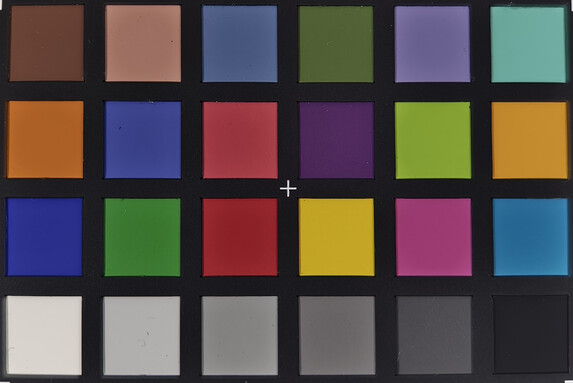

Accessories and warranty - 120-watt power supply included
The Vivo X100 Pro comes with a comparatively extensive scope of delivery, which includes a modular 120-watt power supply unit, a USB-C cable, a SIM pin, a black silicone protective case, and the usual paperwork. The power supply can also be used for other devices such as laptops but is then limited to 65 watts. Vivo does not offer any optional accessories.
The warranty varies greatly depending on the region. While the imported Chinese version only offers 12 months, the Czech version has 24 months, and in Austria, it is a whopping 36 months. Vivo Europe has confirmed that warranty claims for models purchased abroad can also be processed in Germany, as the service team is still available despite the patent dispute with Nokia (which we covered).
Input devices & operation - Optical fingerprint in the X100 Pro
The capacitive touchscreen of the Vivo X100 Pro is covered with a protective film ex-works. Its gliding properties are really good, but the glass underneath is even more slippery.
The linear vibration motor (x-axis) provides crisp and responsive haptic feedback. An optical fingerprint sensor in the display is available for biometric security, while less secure face recognition via the front camera is also possible.
Display - Almost 3,000 cd/m² with the Vivo X100 Pro
The AMOLED display of the Vivo X100 Pro is identical to that of its predecessor in terms of dimensions and resolution. It is an LTPO panel that can dynamically adjust the refresh rate between 1 and 120 Hz.
The brightness has been significantly improved, and the display of the X100 Pro now achieves an average of 1,360 cd/m² in a pure white display with the ambient light sensor activated. Vivo trumps this already very good value again with an even distribution of light and dark areas (APL18) and then achieves 1,866 cd/m² in the center of the screen, and we even measured 2,974 cd/m² during HDR playback.
Vivo uses PWM dimming with up to 2,160 Hz to make the OLED's flickering more eye-friendly. However, we can only measure 369 Hz at minimum brightness (1st image from the top), which can certainly cause discomfort for sensitive users. The frequency only increases when the brightness is raised further (at 15%, 1,851 Hz, picture 3). Then, however, we can also detect low-frequency flickering with a high amplitude of only 120 Hz. We can rule out temporal dithering as the cause. This is probably due to black frame insertion (BFI), which is used to reduce motion blur.
| |||||||||||||||||||||||||
Brightness Distribution: 84 %
Center on Battery: 1392 cd/m²
Contrast: ∞:1 (Black: 0 cd/m²)
ΔE ColorChecker Calman: 0.6 | ∀{0.5-29.43 Ø4.78}
ΔE Greyscale Calman: 0.9 | ∀{0.09-98 Ø5}
99.8% sRGB (Calman 2D)
Gamma: 2.25
CCT: 6540 K
| Vivo X100 Pro AMOLED, 2800x1260, 6.8" | Google Pixel 8 Pro OLED, 2992x1344, 6.7" | Nubia Z60 Ultra AMOLED, 2480x1116, 6.8" | Apple iPhone 15 Pro Max OLED, 2796x1290, 6.7" | Vivo X90 Pro AMOLED, 2800x1260, 6.8" | |
|---|---|---|---|---|---|
| Screen | -56% | -107% | -54% | -45% | |
| Brightness middle (cd/m²) | 1392 | 1510 8% | 1003 -28% | 1102 -21% | 1018 -27% |
| Brightness (cd/m²) | 1360 | 1467 8% | 1001 -26% | 1102 -19% | 1026 -25% |
| Brightness Distribution (%) | 84 | 92 10% | 96 14% | 98 17% | 93 11% |
| Black Level * (cd/m²) | |||||
| Colorchecker dE 2000 * | 0.6 | 1.1 -83% | 1.7 -183% | 1.1 -83% | 0.9 -50% |
| Colorchecker dE 2000 max. * | 1.3 | 3.8 -192% | 3.6 -177% | 3.1 -138% | 2.2 -69% |
| Greyscale dE 2000 * | 0.9 | 1.7 -89% | 3.1 -244% | 1.6 -78% | 1.9 -111% |
| Gamma | 2.25 98% | 2.23 99% | 2.26 97% | 2.19 100% | 2.26 97% |
| CCT | 6540 99% | 6670 97% | 6257 104% | 6555 99% | 6473 100% |
* ... smaller is better
Screen Flickering / PWM (Pulse-Width Modulation)
| Screen flickering / PWM detected | 369 Hz | ||
The display backlight flickers at 369 Hz (worst case, e.g., utilizing PWM) . The frequency of 369 Hz is relatively high, so most users sensitive to PWM should not notice any flickering. However, there are reports that some users are still sensitive to PWM at 500 Hz and above, so be aware. In comparison: 53 % of all tested devices do not use PWM to dim the display. If PWM was detected, an average of 8101 (minimum: 5 - maximum: 343500) Hz was measured. | |||
Measurement series with fixed zoom level and different brightness settings
The color reproduction of AMOLED displays, which we checked with the Calman analysis software, is excellent if the Pro mode is activated in the settings. The display is visibly cooler in the default settings.
Display Response Times
| ↔ Response Time Black to White | ||
|---|---|---|
| 1.17 ms ... rise ↗ and fall ↘ combined | ↗ 0.5905 ms rise | |
| ↘ 0.575 ms fall | ||
| The screen shows very fast response rates in our tests and should be very well suited for fast-paced gaming. In comparison, all tested devices range from 0.1 (minimum) to 240 (maximum) ms. » 5 % of all devices are better. This means that the measured response time is better than the average of all tested devices (20.2 ms). | ||
| ↔ Response Time 50% Grey to 80% Grey | ||
| 0.61 ms ... rise ↗ and fall ↘ combined | ↗ 0.3075 ms rise | |
| ↘ 0.303 ms fall | ||
| The screen shows very fast response rates in our tests and should be very well suited for fast-paced gaming. In comparison, all tested devices range from 0.165 (minimum) to 636 (maximum) ms. » 1 % of all devices are better. This means that the measured response time is better than the average of all tested devices (31.6 ms). | ||
The Vivo X100 Pro is perfectly prepared for outdoor use thanks to its enormous brightness reserves. Only the surface reflections can be annoying here.
The viewing angles of the Vivo smartphone are very good. No color changes are visible, and the brightness is hardly reduced, but we can see a slight rainbow shimmer at certain viewing angles.
Performance - Vivo relies on the MediaTek Dimensity 9300
The Vivo X100 Pro is powered by the Dimensity 9300 with a generous 16 GB LPDDR5x RAM. The top-of-the-line SoC from MediaTek focuses fully on performance and does not use energy-efficient cores but rather low-clocked Cortex-A720 cores for such tasks.
In the Geekbench single-core test, a well-cooled Snapdragon 8 Gen 3 is still three to six percent faster, but in the multi-core test, the Dimensity 9300 flexes its muscles and takes the lead in the comparison field. The SoC also delivers strong performance in the AI and system benchmarks.
| Antutu v10 - Total Score | |
| Nubia Z60 Ultra | |
| Vivo X100 Pro | |
| Average MediaTek Dimensity 9300 (n=1) | |
| Average of class Smartphone (142748 - 3269237, n=152, last 2 years) | |
| Apple iPhone 15 Pro Max | |
| Google Pixel 8 Pro | |
| Antutu v9 - Total Score | |
| Vivo X100 Pro | |
| Average MediaTek Dimensity 9300 (n=1) | |
| Vivo X90 Pro | |
| Google Pixel 8 Pro | |
| Average of class Smartphone (99654 - 2056989, n=26, last 2 years) | |
| PCMark for Android - Work 3.0 | |
| Nubia Z60 Ultra | |
| Average of class Smartphone (4507 - 28557, n=186, last 2 years) | |
| Vivo X100 Pro | |
| Average MediaTek Dimensity 9300 (n=1) | |
| Google Pixel 8 Pro | |
| Vivo X90 Pro | |
| CrossMark - Overall | |
| Apple iPhone 15 Pro Max | |
| Nubia Z60 Ultra | |
| Vivo X100 Pro | |
| Average MediaTek Dimensity 9300 (n=1) | |
| Average of class Smartphone (187 - 2674, n=123, last 2 years) | |
| Google Pixel 8 Pro | |
| Vivo X90 Pro | |
| UL Procyon AI Inference for Android - Overall Score NNAPI | |
| Vivo X100 Pro | |
| Average MediaTek Dimensity 9300 (n=1) | |
| Vivo X90 Pro | |
| Google Pixel 8 Pro | |
| Average of class Smartphone (3769 - 81594, n=135, last 2 years) | |
| Nubia Z60 Ultra | |
| Geekbench ML | |
| 0.6 TensorFlow Lite NNAPI | |
| Vivo X100 Pro | |
| Average MediaTek Dimensity 9300 (n=1) | |
| Average of class Smartphone (186 - 2488, n=24, last 2 years) | |
| Nubia Z60 Ultra | |
| 0.6 TensorFlow Lite CPU | |
| Vivo X100 Pro | |
| Average MediaTek Dimensity 9300 (n=1) | |
| Nubia Z60 Ultra | |
| Average of class Smartphone (267 - 1317, n=28, last 2 years) | |
| 0.6 TensorFlow Lite GPU | |
| Nubia Z60 Ultra | |
| Vivo X100 Pro | |
| Average MediaTek Dimensity 9300 (n=1) | |
| Average of class Smartphone (123 - 1478, n=28, last 2 years) | |
The integrated GPU accompanying the Dimensity 9300 is an ARM Immortalis-G720 MP12, which also supports hardware-based ray tracing.
The performance offered is very high and should meet all requirements. However, especially with the modern Vulkan-based benchmarks and ray tracing, the Adreno 750 is significantly faster.
Nevertheless, the X100 Pro delivers very good and stable performance in games. We were only denied the Ultra HD setting in PUGB Mobile, and in HD mode the frame rate reached 40 FPS.
GFXBench (DX / GLBenchmark) 2.7: T-Rex Onscreen | 1920x1080 T-Rex Offscreen
GFXBench 3.0: on screen Manhattan Onscreen OGL | 1920x1080 1080p Manhattan Offscreen
GFXBench 3.1: on screen Manhattan ES 3.1 Onscreen | 1920x1080 Manhattan ES 3.1 Offscreen
GFXBench: on screen Car Chase Onscreen | 1920x1080 Car Chase Offscreen | on screen Aztec Ruins High Tier Onscreen | 2560x1440 Aztec Ruins High Tier Offscreen | on screen Aztec Ruins Normal Tier Onscreen | 1920x1080 Aztec Ruins Normal Tier Offscreen | 3840x2160 4K Aztec Ruins High Tier Offscreen
| 3DMark / Wild Life Extreme Unlimited | |
| Vivo X100 Pro | |
| Nubia Z60 Ultra | |
| Apple iPhone 15 Pro Max | |
| Vivo X90 Pro | |
| Google Pixel 8 Pro | |
| 3DMark / Wild Life Extreme | |
| Nubia Z60 Ultra | |
| Vivo X100 Pro | |
| Vivo X90 Pro | |
| Apple iPhone 15 Pro Max | |
| Google Pixel 8 Pro | |
| 3DMark / Wild Life Unlimited Score | |
| Nubia Z60 Ultra | |
| Vivo X100 Pro | |
| Apple iPhone 15 Pro Max | |
| Vivo X90 Pro | |
| Google Pixel 8 Pro | |
| 3DMark / Wild Life Score | |
| Google Pixel 8 Pro | |
| 3DMark / Sling Shot Extreme (ES 3.1) Unlimited Physics | |
| Vivo X100 Pro | |
| Vivo X90 Pro | |
| Google Pixel 8 Pro | |
| 3DMark / Sling Shot Extreme (ES 3.1) Unlimited Graphics | |
| Vivo X100 Pro | |
| Vivo X90 Pro | |
| Google Pixel 8 Pro | |
| 3DMark / Sling Shot Extreme (ES 3.1) Unlimited | |
| Vivo X100 Pro | |
| Vivo X90 Pro | |
| Google Pixel 8 Pro | |
| 3DMark / Solar Bay Unlimited Score | |
| Nubia Z60 Ultra | |
| Vivo X100 Pro | |
| Apple iPhone 15 Pro Max | |
| Vivo X90 Pro | |
| 3DMark / Solar Bay Score | |
| Nubia Z60 Ultra | |
| Vivo X100 Pro | |
| Apple iPhone 15 Pro Max | |
| Vivo X90 Pro | |
| GFXBench (DX / GLBenchmark) 2.7 / T-Rex Onscreen | |
| Vivo X90 Pro | |
| Google Pixel 8 Pro | |
| Vivo X100 Pro | |
| Apple iPhone 15 Pro Max | |
| Nubia Z60 Ultra | |
| GFXBench (DX / GLBenchmark) 2.7 / T-Rex Offscreen | |
| Vivo X100 Pro | |
| Nubia Z60 Ultra | |
| Vivo X90 Pro | |
| Apple iPhone 15 Pro Max | |
| Google Pixel 8 Pro | |
| GFXBench 3.0 / Manhattan Onscreen OGL | |
| Vivo X90 Pro | |
| Google Pixel 8 Pro | |
| Vivo X100 Pro | |
| Apple iPhone 15 Pro Max | |
| Nubia Z60 Ultra | |
| GFXBench 3.0 / 1080p Manhattan Offscreen | |
| Nubia Z60 Ultra | |
| Vivo X100 Pro | |
| Vivo X90 Pro | |
| Apple iPhone 15 Pro Max | |
| Google Pixel 8 Pro | |
| GFXBench 3.1 / Manhattan ES 3.1 Onscreen | |
| Vivo X100 Pro | |
| Google Pixel 8 Pro | |
| Vivo X90 Pro | |
| Apple iPhone 15 Pro Max | |
| Nubia Z60 Ultra | |
| GFXBench 3.1 / Manhattan ES 3.1 Offscreen | |
| Nubia Z60 Ultra | |
| Vivo X100 Pro | |
| Apple iPhone 15 Pro Max | |
| Vivo X90 Pro | |
| Google Pixel 8 Pro | |
| GFXBench / Car Chase Onscreen | |
| Vivo X100 Pro | |
| Vivo X90 Pro | |
| Google Pixel 8 Pro | |
| Apple iPhone 15 Pro Max | |
| Nubia Z60 Ultra | |
| GFXBench / Car Chase Offscreen | |
| Nubia Z60 Ultra | |
| Vivo X100 Pro | |
| Apple iPhone 15 Pro Max | |
| Vivo X90 Pro | |
| Google Pixel 8 Pro | |
| GFXBench / Aztec Ruins High Tier Onscreen | |
| Vivo X100 Pro | |
| Vivo X90 Pro | |
| Google Pixel 8 Pro | |
| Nubia Z60 Ultra | |
| Apple iPhone 15 Pro Max | |
| GFXBench / Aztec Ruins High Tier Offscreen | |
| Nubia Z60 Ultra | |
| Vivo X100 Pro | |
| Apple iPhone 15 Pro Max | |
| Vivo X90 Pro | |
| Google Pixel 8 Pro | |
| GFXBench / Aztec Ruins Normal Tier Onscreen | |
| Vivo X100 Pro | |
| Vivo X90 Pro | |
| Google Pixel 8 Pro | |
| Nubia Z60 Ultra | |
| Apple iPhone 15 Pro Max | |
| GFXBench / Aztec Ruins Normal Tier Offscreen | |
| Nubia Z60 Ultra | |
| Vivo X100 Pro | |
| Apple iPhone 15 Pro Max | |
| Vivo X90 Pro | |
| Google Pixel 8 Pro | |
| GFXBench / 4K Aztec Ruins High Tier Offscreen | |
| Nubia Z60 Ultra | |
| Vivo X100 Pro | |
| Apple iPhone 15 Pro Max | |
| Vivo X90 Pro | |
| Google Pixel 8 Pro | |
| Jetstream 2 - 2.0 Total Score | |
| Apple iPhone 15 Pro Max (Safari Mobile 17) | |
| Nubia Z60 Ultra (Edge 120) | |
| Nubia Z60 Ultra (Chrome 121) | |
| Vivo X100 Pro (Chrome 121) | |
| Average MediaTek Dimensity 9300 (n=1) | |
| Average of class Smartphone (23.8 - 387, n=149, last 2 years) | |
| Google Pixel 8 Pro (Chrome 117) | |
| Vivo X90 Pro (Chrome 109) | |
| Speedometer 2.0 - Result 2.0 | |
| Apple iPhone 15 Pro Max (Safari Mobile 17) | |
| Vivo X100 Pro (Chrome 121) | |
| Average MediaTek Dimensity 9300 (n=1) | |
| Average of class Smartphone (15.2 - 643, n=122, last 2 years) | |
| Nubia Z60 Ultra (Edge 120) | |
| Google Pixel 8 Pro (Chrome 117) | |
| Vivo X90 Pro (Chrome 109) | |
| WebXPRT 4 - Overall | |
| Vivo X100 Pro (Chrome 121) | |
| Average MediaTek Dimensity 9300 (n=1) | |
| Nubia Z60 Ultra (Edge 120) | |
| Average of class Smartphone (27 - 306, n=145, last 2 years) | |
| Google Pixel 8 Pro (Chrome 117) | |
| Vivo X90 Pro (Chrome 109) | |
| WebXPRT 3 - Overall | |
| Apple iPhone 15 Pro Max (Safari Mobile 17) | |
| Vivo X100 Pro (Chrome 121) | |
| Average MediaTek Dimensity 9300 (n=1) | |
| Average of class Smartphone (38 - 380, n=31, last 2 years) | |
| Google Pixel 8 Pro (Chrome 117) | |
| Vivo X90 Pro (Chrome 109) | |
| Octane V2 - Total Score | |
| Apple iPhone 15 Pro Max (Safari Mobile 17) | |
| Nubia Z60 Ultra (Edge 120) | |
| Vivo X100 Pro (Chrome 121) | |
| Average MediaTek Dimensity 9300 (n=1) | |
| Google Pixel 8 Pro (Chrome 117) | |
| Average of class Smartphone (2228 - 121337, n=197, last 2 years) | |
| Vivo X90 Pro (Chrome 109) | |
| Mozilla Kraken 1.1 - Total | |
| Vivo X90 Pro (Chrome 109) | |
| Average of class Smartphone (257 - 28190, n=154, last 2 years) | |
| Google Pixel 8 Pro (Chrome 117) | |
| Vivo X100 Pro (Chrome 121) | |
| Average MediaTek Dimensity 9300 (n=1) | |
| Nubia Z60 Ultra (Edge 120) | |
| Apple iPhone 15 Pro Max (Safari Mobile 17) | |
* ... smaller is better
| Vivo X100 Pro | Google Pixel 8 Pro | Nubia Z60 Ultra | Vivo X90 Pro | Average 512 GB UFS 4.0 Flash | Average of class Smartphone | |
|---|---|---|---|---|---|---|
| AndroBench 3-5 | -71% | 2% | -18% | -16% | -44% | |
| Sequential Read 256KB (MB/s) | 3986.41 | 1501.13 -62% | 3926.73 -1% | 3866.75 -3% | 3689 ? -7% | 2228 ? -44% |
| Sequential Write 256KB (MB/s) | 3461.77 | 257.28 -93% | 3518.47 2% | 2643.38 -24% | 3092 ? -11% | 1852 ? -47% |
| Random Read 4KB (MB/s) | 450.24 | 156.16 -65% | 477.73 6% | 367.89 -18% | 385 ? -14% | 296 ? -34% |
| Random Write 4KB (MB/s) | 709.25 | 258.92 -63% | 701.13 -1% | 521.43 -26% | 474 ? -33% | 339 ? -52% |
FPS in games
Emissions - Heavy throttling of the Dimensity 9300 under load
Temperature
As expected, the Vivo X100 Pro remains pleasantly cool at idle, although the surface temperatures climb up to 47.5 °C in places under constant load, but this is harmless and should only rarely be reached in everyday use.
In the 3DMark stress tests, the SoC throttles heavily and works much slower in the long run.
(-) The maximum temperature on the upper side is 47.5 °C / 118 F, compared to the average of 35.2 °C / 95 F, ranging from 21.9 to 247 °C for the class Smartphone.
(-) The bottom heats up to a maximum of 45.1 °C / 113 F, compared to the average of 34 °C / 93 F
(+) In idle usage, the average temperature for the upper side is 25.3 °C / 78 F, compared to the device average of 32.9 °C / 91 F.
3DMark Wild Life Stress Test
| 3DMark | |
| Wild Life Stress Test Stability | |
| Apple iPhone 15 Pro Max | |
| Google Pixel 8 Pro | |
| Vivo X90 Pro | |
| Nubia Z60 Ultra | |
| Vivo X100 Pro | |
| Wild Life Extreme Stress Test | |
| Vivo X90 Pro | |
| Nubia Z60 Ultra | |
| Google Pixel 8 Pro | |
| Apple iPhone 15 Pro Max | |
| Vivo X100 Pro | |
| Solar Bay Stress Test Stability | |
| Nubia Z60 Ultra | |
| Apple iPhone 15 Pro Max | |
| Vivo X100 Pro | |
Speaker
The Vivo X100 Pro's two speakers deliver a very pleasant sound at medium volume; at maximum volume, the treble dominates, and distortion also occurs.
Alternatively, wired speakers or headphones can be connected via USB. Wireless Bluetooth with a wide range of audio codec support is also available.
Vivo X100 Pro audio analysis
(+) | speakers can play relatively loud (90 dB)
Bass 100 - 315 Hz
(-) | nearly no bass - on average 21.3% lower than median
(±) | linearity of bass is average (7.8% delta to prev. frequency)
Mids 400 - 2000 Hz
(±) | reduced mids - on average 6.2% lower than median
(+) | mids are linear (5.7% delta to prev. frequency)
Highs 2 - 16 kHz
(±) | higher highs - on average 5.5% higher than median
(+) | highs are linear (4.6% delta to prev. frequency)
Overall 100 - 16.000 Hz
(±) | linearity of overall sound is average (16.9% difference to median)
Compared to same class
» 9% of all tested devices in this class were better, 7% similar, 84% worse
» The best had a delta of 11%, average was 35%, worst was 134%
Compared to all devices tested
» 29% of all tested devices were better, 8% similar, 63% worse
» The best had a delta of 4%, average was 24%, worst was 134%
Google Pixel 8 Pro audio analysis
(+) | speakers can play relatively loud (89.4 dB)
Bass 100 - 315 Hz
(-) | nearly no bass - on average 18.4% lower than median
(±) | linearity of bass is average (9.1% delta to prev. frequency)
Mids 400 - 2000 Hz
(±) | reduced mids - on average 5.2% lower than median
(+) | mids are linear (4.8% delta to prev. frequency)
Highs 2 - 16 kHz
(±) | higher highs - on average 6.4% higher than median
(+) | highs are linear (4.6% delta to prev. frequency)
Overall 100 - 16.000 Hz
(±) | linearity of overall sound is average (15.7% difference to median)
Compared to same class
» 4% of all tested devices in this class were better, 4% similar, 92% worse
» The best had a delta of 11%, average was 35%, worst was 134%
Compared to all devices tested
» 23% of all tested devices were better, 5% similar, 72% worse
» The best had a delta of 4%, average was 24%, worst was 134%
Battery life - More power for the Vivo X100 Pro
Power consumption
The power consumption of the Vivo smartphone is exemplary at idle. As expected, it requires significantly more power under load, but even this is kept within limits and seems to be capped by Vivo at 11.8 watts, as both components are throttled by almost 50 percent under full load on the CPU and GPU.
The X100 Pro can be charged with up to 100 watts, and up to 50 watts are possible wirelessly. Reverse wireless charging is also supported.
| Off / Standby | |
| Idle | |
| Load |
|
Key:
min: | |
| Vivo X100 Pro 2700 mAh | Google Pixel 8 Pro 5050 mAh | Nubia Z60 Ultra 6000 mAh | Apple iPhone 15 Pro Max 4422 mAh | Vivo X90 Pro 4870 mAh | Average MediaTek Dimensity 9300 | Average of class Smartphone | |
|---|---|---|---|---|---|---|---|
| Power Consumption | -21% | -57% | -30% | -57% | 0% | -33% | |
| Idle Minimum * (Watt) | 0.46 | 0.63 -37% | 0.69 -50% | 0.5 -9% | 0.9 -96% | 0.46 ? -0% | 0.842 ? -83% |
| Idle Average * (Watt) | 0.92 | 1.47 -60% | 1.52 -65% | 1.97 -114% | 2.32 -152% | 0.92 ? -0% | 1.439 ? -56% |
| Idle Maximum * (Watt) | 0.95 | 1.55 -63% | 1.6 -68% | 1.99 -109% | 2.39 -152% | 0.95 ? -0% | 1.624 ? -71% |
| Load Average * (Watt) | 11.72 | 8.45 28% | 14.73 -26% | 3.36 71% | 3.64 69% | 11.7 ? -0% | 7.03 ? 40% |
| Load Maximum * (Watt) | 11.79 | 8.63 27% | 20.82 -77% | 10.43 12% | 6.53 45% | 11.8 ? -0% | 11.3 ? 4% |
* ... smaller is better
Power consumption: Geekbench (150 cd/m²)
Power consumption: GFXBench (150 cd/m²)
Battery life
Vivo advertises the X100 Pro with a 5,400 mAh battery. This is actually a cell with 2,700 mAh, but it works with a higher voltage (7.78 V) and, therefore, achieves the same performance in watt hours (Wh) as a conventional battery in other smartphones with 5,400 mAh and 3.89 V.
The runtimes are very good in the WLAN test with adjusted display brightness (150 cd/m²). As we also used the smartphone during the trade fair, we can add at this point that the camera drains the battery heavily.
| Battery runtime - WiFi v1.3 | |
| Vivo X100 Pro | |
| Google Pixel 8 Pro | |
| Nubia Z60 Ultra | |
| Apple iPhone 15 Pro Max | |
| Vivo X90 Pro | |
Pros
Cons
Verdict - Greatly improved, but not flawless
With the X100 Pro, Vivo has taken some of the criticism from its predecessor to heart and does much better. For example, Vivo has improved the display in all areas: it is very bright, reproduces colors accurately, and now also uses an economical LTPO. The manufacturer has also completely revised the additional lenses for the cameras and now offers a very well-rounded overall package, which also continues to benefit from a dedicated ISP and cooperation with Zeiss. The smartphone is also IP68-certified and comes with a generous scope of delivery.
Vivo has to put up with criticism, in particular, when it comes to the comparatively short update supply cycle. Most manufacturers in this price segment offer at least five years. However, it is also a shame that Vivo has removed the wired image output via USB.
The Vivo X100 Pro is a powerful high-end smartphone - its biggest criticism is probably the short update supply.
Strong alternatives to the Vivo X100 Pro include the Pixel 8 Pro, the Samsung Galaxy S24 Ultra, or the Xiaomi 14.
Price and availability
The Vivo X100 Pro is available in regular stores in Austria and the Czech Republic. If you prefer the cheaper import version with the aforementioned restrictions, you can find it at TradingShenzhen.
Vivo X100 Pro
- 03/07/2024 v7 (old)
Daniel Schmidt
Transparency
The selection of devices to be reviewed is made by our editorial team. The test sample was provided to the author as a loan by the manufacturer or retailer for the purpose of this review. The lender had no influence on this review, nor did the manufacturer receive a copy of this review before publication. There was no obligation to publish this review. As an independent media company, Notebookcheck is not subjected to the authority of manufacturers, retailers or publishers.
This is how Notebookcheck is testing
Every year, Notebookcheck independently reviews hundreds of laptops and smartphones using standardized procedures to ensure that all results are comparable. We have continuously developed our test methods for around 20 years and set industry standards in the process. In our test labs, high-quality measuring equipment is utilized by experienced technicians and editors. These tests involve a multi-stage validation process. Our complex rating system is based on hundreds of well-founded measurements and benchmarks, which maintains objectivity. Further information on our test methods can be found here.




